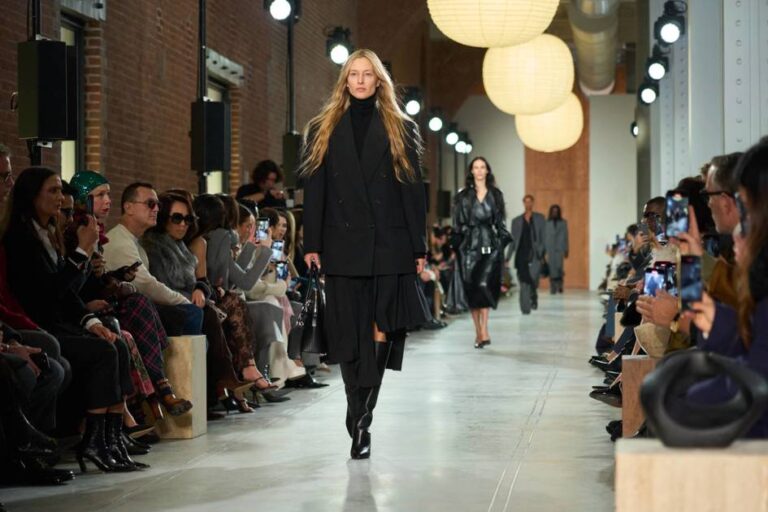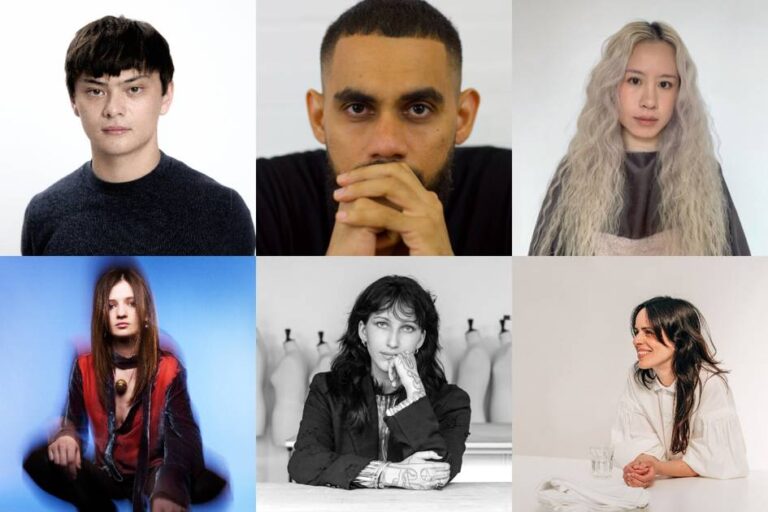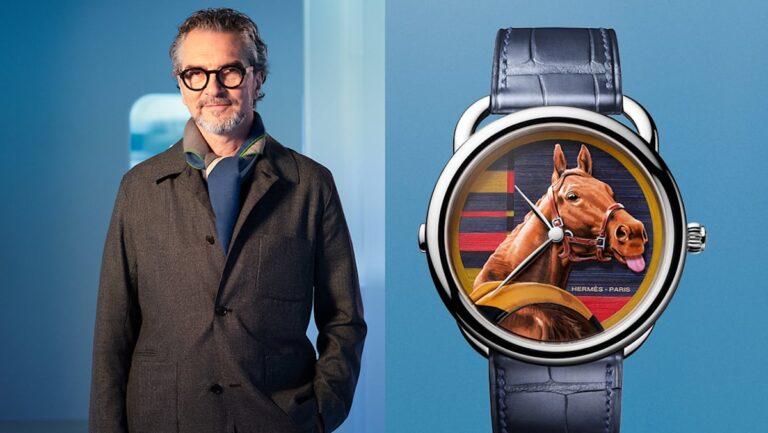SS26 Redefines Social Media Standards Under New Leadership

Often, the success of a fashion designer’s initial collection is best evaluated only after their third season has passed. Before this milestone, however, there are subtle indicators that can suggest whether a fashion house is in tune with the cultural moment, especially when a new creative director comes into play. This season has seen particularly heightened anticipation.
The spring/summer 2026 collections have indeed marked a significant moment in fashion history. Many prestigious brands debuted their visions under fresh creative leadership for the first time, resulting in a season noted for its substantial social media impact.
The fashion weeks reached an impressive Earned Media Value (EMV) of $881.2 million, showcasing a growth of five percent compared to the previous year. This increase was driven by a 23 percent rise in published content, a 22 percent boost in influencer engagement, and a six percent uplift in audience interaction.
To assess the standout shows of the season, influencer marketing platform Lefty, along with Karla Otto, analyzed posts made by influencers with over 10,000 followers on Instagram and TikTok. They examined impressions and engagement related to Fashion Week content, ultimately calculating the Earned Media Value (EMV) associated with these posts.
EMV serves as a vital metric for brands and influencers, providing insights into the advertising equivalent of the impressions achieved. For Instagram and TikTok, this calculation was based on a cost of $100 per Cost-per-Mille (CPM).
These remarkable figures highlight that choosing a new creative direction can yield substantial aesthetic and communicative effects. Which brands excelled in leveraging social media during this time? This key aspect was the focus of analysis by the PR agency Karla Otto in relation to the SS26 season.
Assessing Debuts and Established Brands
Paris and Milan took center stage, contributing 57 and 28 percent to the total Earned Media Value, respectively. Within this powerful pair, Dior emerged as a leader. Although Jonathan Anderson’s first womenswear collection for the house wasn’t a traditional debut, it amassed an astounding $90.6 million in EMV, reflecting a 46 percent year-over-year increase. This remarkable performance eclipsed not only other debuts but the season’s entire lineup.
- Jonathan Anderson’s first womenswear collection for Dior: $90.6 million EMV
- Matthieu Blazy’s first Chanel show: $42.8 million EMV
- Demna’s inaugural collection for Gucci: $31.7 million EMV
- Pierpaolo Piccioli’s debut for Balenciaga: $27.8 million EMV
- Louise Trotter’s first collection for Bottega Veneta: $27.1 million EMV
- Jack McCollough and Lazaro Hernandez’s first collection for Loewe: $13.9 million EMV
- Glenn Martens’ first womenswear collection for Maison Margiela: $12.7 million EMV
- Dario Vitale’s debut for Versace: $11.2 million EMV
- Miguel Castro Freitas’s debut for Mugler: $6.2 million EMV
- Duran Lantink’s inaugural collection for Jean Paul Gaultier: $3.2 million EMV
- Simone Bellotti’s first collection for Jil Sander: $963,000 EMV
In comparison, Chanel generated significant expectations with its new creative director but achieved around half the EMV of Dior, totaling $42.8 million while enhancing visibility by 33 percent. Karla Otto credited Chanel with creating a notable “viral moment,” thanks to a presentation designed for social media paired with a soundtrack tailored for engagement.
- Dior: $90.6 million EMV
- Louis Vuitton: $48.7 million EMV
- Prada: $45.8 million EMV
- Chanel: $42.8 million EMV
- Valentino: $33.9 million EMV
Prada, Louis Vuitton, and Valentino maintained their successful strategies without leadership changes. Their achievements were bolstered by strategic influencer collaborations and star-studded guest lists. Notably, Prada benefited tremendously from the presence of the South Korean band Enhypen, contributing $18.3 million to its EMV.
The ongoing success of K-pop stars in influencing fashion is notable, as insights revealed a rise in visibility for Thai actors this season. For the first time, two Thai celebrities emerged at the top of the influencer rankings, though K-pop artists still commanded a significant share of 63.2 percent in media mentions, reflecting their cultural clout.
Fashion as Narrative
With shifts in creative leadership, the focus of audiences is increasingly turning toward the personalities behind the scenes. As awareness around Fashion Month grows, viewers are keen to learn about the individuals shaping the industry’s emotions and energy.
In London, makeup artist Dominic Skinner, Mac’s creative director, emerged as a key influencer, with just two posts from the Richard Quinn show generating nearly $900,000 in EMV, placing him third in engagement rankings. A viral video from the Chanel atelier, showcasing artisans completing a final look, also captured significant attention for its intimate portrayal of craftsmanship.
Fashion brands are responding to this interest by enhancing behind-the-scenes visibility. Livestreams, backstage content, and collaborations with creators capturing these perspectives are on the rise. For instance, Boss featured a celebrity Q&A during its show, while Ralph Lauren partnered with creator Isabelle Allain for a backstage series. Additionally, Fendi and Dior worked with documentary filmmaker Loïc Prigent to elevate brand storytelling, with Prigent’s TikTok showcasing an emotional moment with Jonathan Anderson during the Dior show, reaching 4.6 million views.
Furthermore, the fashion industry is increasingly adopting cinematic storytelling to connect emotionally with audiences, making runway shows part of broader digital narratives. Dior launched a documentary directed by Adam Curtis, while Gucci collaborated with filmmaker Spike Jonze on a short film titled *The Tiger*.
Actors, forming about one-third of the talent featured, generated significant EMV as well—$217.8 million, up by 25.8 percent year-over-year. Dolce & Gabbana, for instance, showcased Meryl Streep, Stanley Tucci, and Simone Ashley at its show for *The Devil Wears Prada 2*, collectively generating $8.2 million in EMV.
This article was translated to English using an AI tool.
FashionUnited uses AI language tools to speed up translating (news) articles and proofread the translations to improve the end result. This saves our human journalists time they can spend doing research and writing original articles. Articles translated with the help of AI are checked and edited by a human desk editor prior to going online. If you have questions or comments about this process email us at info@fashionunited.com
What are your thoughts on the evolving role of social media in the fashion industry?





